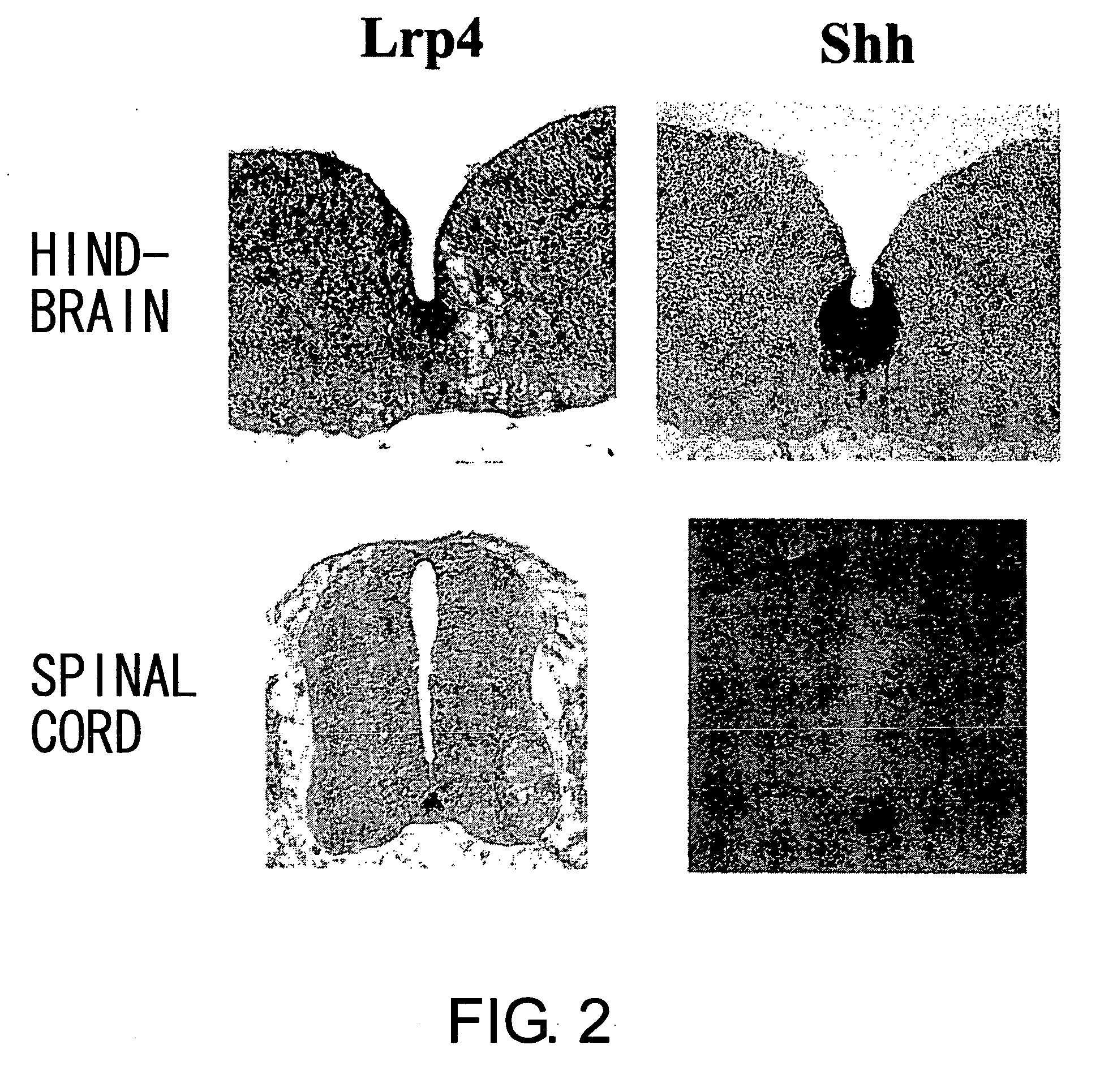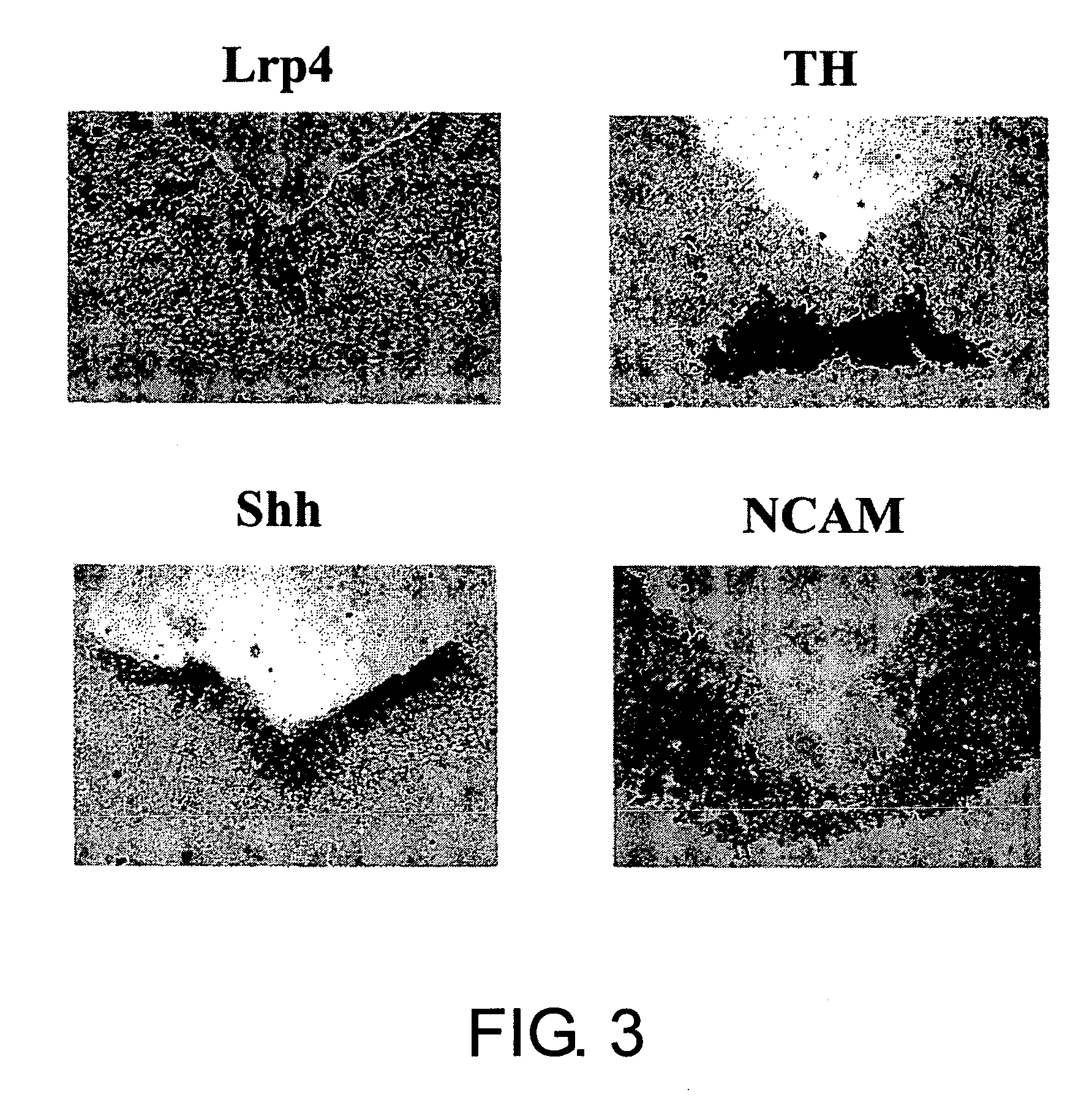Lrp4/corin dopamine-producing neuron proliferation precursor cell marker
a precursor cell and corin dopamine technology, applied in the direction of artificial cell constructs, immunoglobulins against animals/humans, drug compositions, etc., can solve the problems of unsatisfactory effect, risk of infection and contamination, method is currently being criticized, etc., to improve the efficiency of gene expression screening, high sensitivity, and speed
- Summary
- Abstract
- Description
- Claims
- Application Information
AI Technical Summary
Benefits of technology
Problems solved by technology
Method used
Image
Examples
Embodiment Construction
tion will be explained in more detail with reference to examples, but should not be construed as being limited thereto.
1. Isolation and Sequence Analysis of a Gene Specific to Dopaminergic Neuron Progenitor Cells
[0107] To isolate a gene specific to dopaminergic neuron progenitor cells, the midbrain ventral region of E12.5 mice was additionally cut into two regions in the dorsoventral direction, and genes specifically expressed in the most ventral region containing dopaminergic neurons were identified by the subtraction (N-RDA) method. One of the isolated cDNA fragments was a fragment encoding Lrp4 / Corin. Lrp4 encodes type II transmembrane proteins (FIG. 1).
(1) N-RDA Method
(1)-1. Adapter Preparation
[0108] The following oligonucleotides were annealed to each other, and prepared at 100 μM.
(ad2: ad2S + ad2A, ad3: ad3S + ad3A, ad4: ad4S +ad4A, ad5: ad5S + ad5A, ad13: ad13S + ad13A)ad2S:cagctccacaacctacatcattccgt(SEQ ID NO:5)ad2A:acggaatgatgt(SEQ ID NO:6)ad3S:gtccatcttctctctgagac...
PUM
| Property | Measurement | Unit |
|---|---|---|
| Therapeutic | aaaaa | aaaaa |
Abstract
Description
Claims
Application Information
 Login to View More
Login to View More - R&D
- Intellectual Property
- Life Sciences
- Materials
- Tech Scout
- Unparalleled Data Quality
- Higher Quality Content
- 60% Fewer Hallucinations
Browse by: Latest US Patents, China's latest patents, Technical Efficacy Thesaurus, Application Domain, Technology Topic, Popular Technical Reports.
© 2025 PatSnap. All rights reserved.Legal|Privacy policy|Modern Slavery Act Transparency Statement|Sitemap|About US| Contact US: help@patsnap.com



